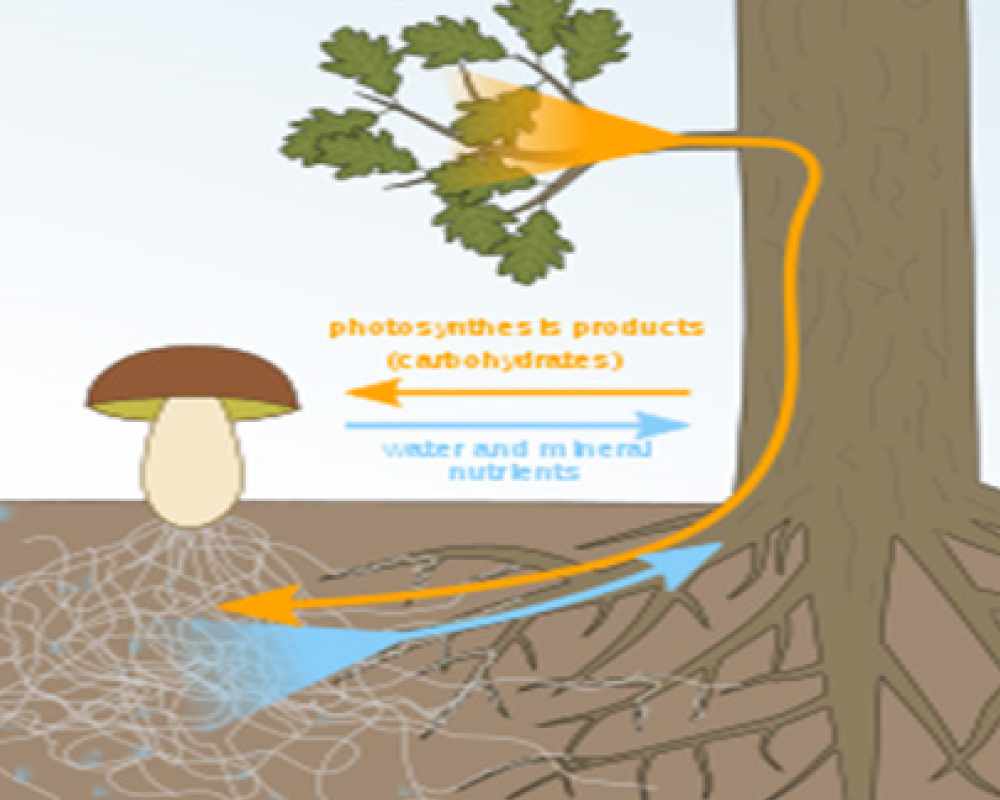The enforced leisure of COVID gave Kit Smith, one of our members, the opportunity to further his relationship with a magnificent Quercus Rubor – his favourite oak tree on the Ridgeway beyond Hobsons Brewery in Cleobury Mortimer. The fact that his garden was wilting during the hot summer whilst this oak was surviving well, caused Kit to research the WHY? and HOW? questions. He was guided to the existence of the MYCORRHIZAL NETWORKS – a wood-wide web.
Kit Smith is Cleobury’s own passionate environmentalist. At our Monday meeting, he spoke of a love affair – a very long love affair, a 40 million year-long love affair – between fungi, plants and trees which communicate with each other through their interconnected root systems, in a symbiotic relationship of mutual benefit: trees receive water and minerals from fungi in return for sugars created by the photosynthesis of trees. Beneath the ground the root structures grow towards one another and have become a continuous underground network existing over vast areas of land, crossing countries, boundaries and borders. Increasingly, however, with development, some farming practices, population movement, civil and military unrest, the networks are suffering disruption and the food and nutrient exchanges interrupted.
The diagram above illustrates how the hyphae of the mycorrhizal fungi interweave with tree roots
(Reproduced with the kind permission of Kensington and Chelsea Mind)
We live very close to the Wyre Forest, one of the largest natural oak forests in this country, and here we are able to see the above-ground expressions of this network in the lines and groups of plants and trees, surviving in a natural habitat, relatively free from interference. Another identified expression of this exchange can be seen in the defence structures. Arborealists have identified that if a tree begins to suffer from disease or insect attack, other trees in close proximity will receive a warning and begin to increase their production of tannins to mount a defence.
Kit is one of a group who has gathered and potted on a host of oak acorns for planting in gaps in the network identified through the evidence of a network mapping enterprise which is already in existence in Cleobury Mortimer. There is not a major programme of this work in the UK at this time, but several foreign centres of learning have the benefit of ancient and undisturbed networks for their study; following identified disruption have been successful in re-establishing and regenerating mycorrhizal networks by matched planting.
So how can we play our part? The importance of countryside to Cleobury residents, and the requirement to protect trees, tracks and wildlife corridors came through very strongly in the responses to the Neighbourhood Plan questionnaire, the ramifications of which will remain relevant until 2038 – another 14 years for us to adjust, control and change for our own benefit and for those who follow. Be aware of disrupting the soil. Apply mycorrhizal powder to the roots of plants to encourage root development, and plant to reinstate networks rather than cause further disruption.
There exists an outline map of wildlife corridors which have already been created around Cleobury Mortimer which is available from Cleobury Country centre.

